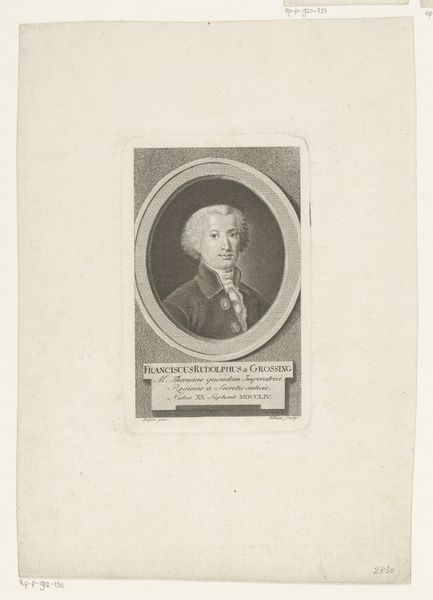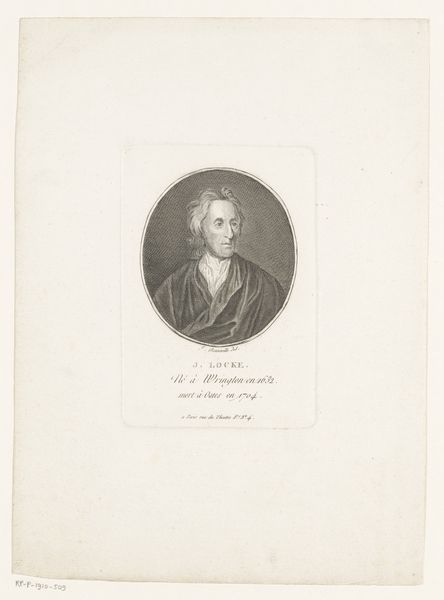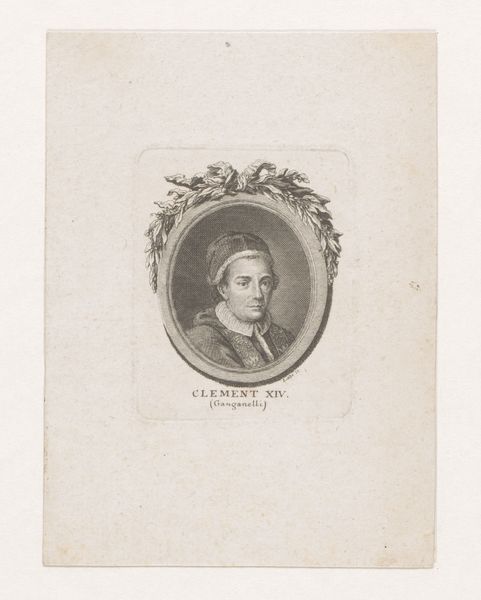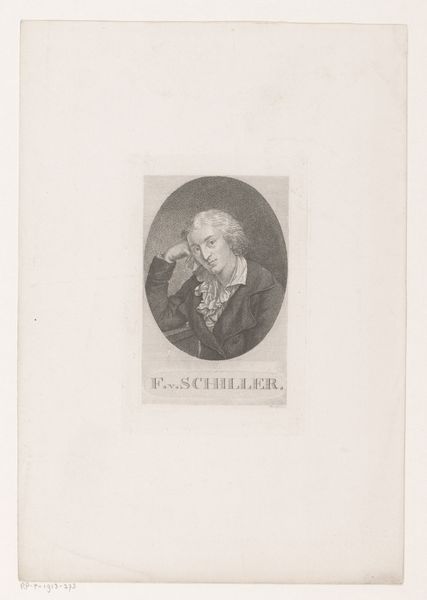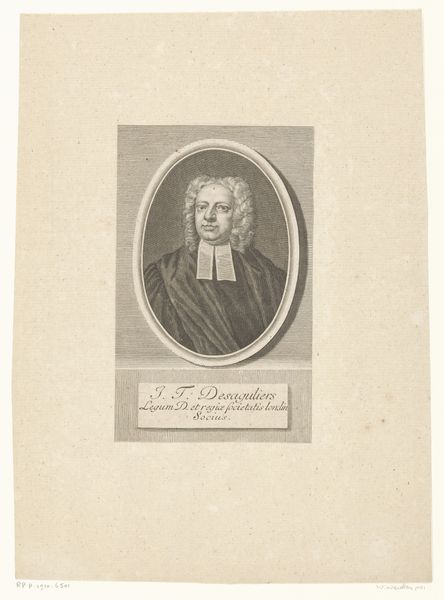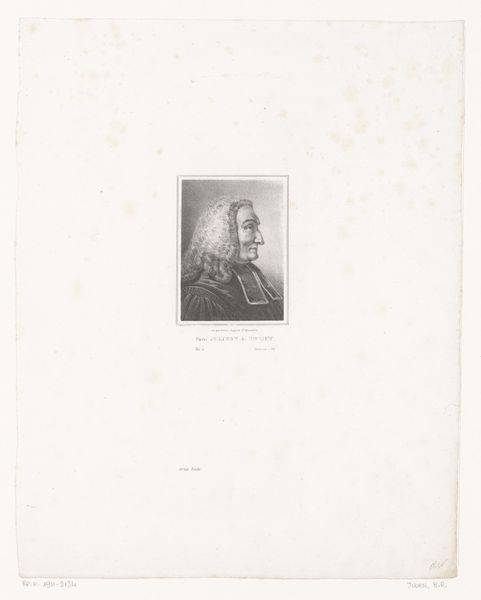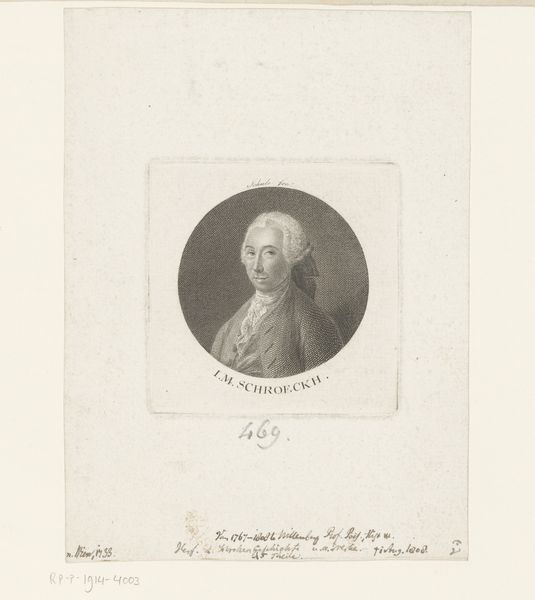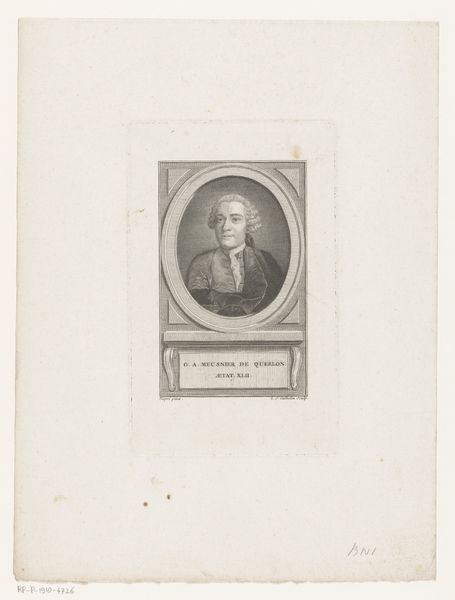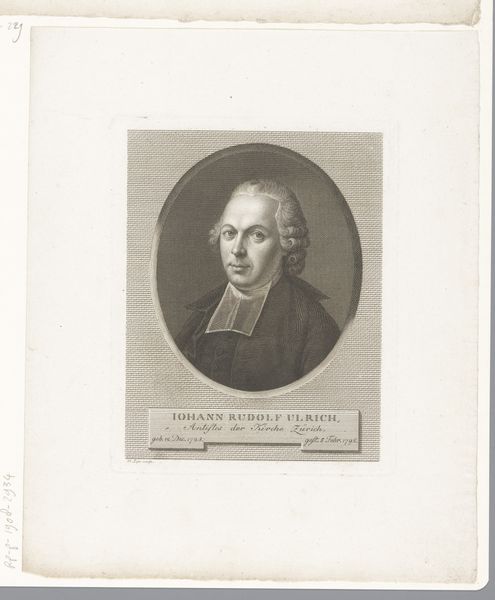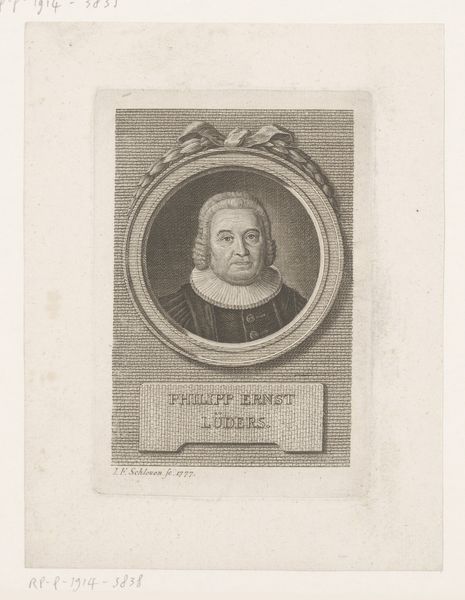
Dimensions: height 141 mm, width 89 mm
Copyright: Rijks Museum: Open Domain
Editor: So, this is "Portrait of Jean-Baptiste Dubos" by Charles Etienne Gaucher, dating somewhere between 1751 and 1804. It's an engraving – it gives such a serious, almost severe, impression, yet refined. What strikes you when you look at it? Curator: The framed oval containing the portrait evokes classical cameos and intaglios – objects imbued with symbolic power and historical memory. Think about how portraiture, especially in this era, was about constructing an identity. The clothing, the wig, the gaze – these are all deliberate signals. What do you think they signal to us? Editor: I guess that his vestments symbolize intellect, probably of someone belonging to the clergy? What cultural values were embedded in such imagery at that time? Curator: Exactly. The clerical garb combined with the direct gaze, suggest a man of authority, scholarship, and piety. Consider that Dubos was a significant intellectual figure. Gaucher uses these established visual tropes to convey not just a likeness, but also Dubos’s social role and intellectual weight within French society. It's not just a picture, it's a statement. Do you notice how the crisp lines communicate that clearly? Editor: Yes, and I now realize it isn't *just* an image; it's conveying a carefully constructed persona and reinforcing particular societal values. Thank you! Curator: Indeed. The image reveals much more than it immediately presents, it's designed for conveying power and importance to its viewers.
Comments
No comments
Be the first to comment and join the conversation on the ultimate creative platform.
